Abstract
Reinforcer magnitude and fixed-ratio requirement were varied under two second-order schedules. Under one, the first sequence of a fixed number of responses completed after the lapse of a 10-min fixed interval produced reinforcement. Under the second, a second-order progressive-ratio schedule, the fixed number of responses increased after each reinforcement. Either cocaine (0 to 300 micrograms/kg/inj) or food (0 to 5,700 mg/delivery) reinforcers were delivered. Under some conditions, a 2-s illumination of stimulus lights occurred on completion of each ratio sequence. Under the second-order schedule, as cocaine dose or amount of food increased, rates of responding increased; at the highest values, rates of responding decreased. Increases in the ratio requirement from 10 to 170 responses minimally decreased overall response rates. Under the second-order progressive-ratio schedule, increases in dose of cocaine or amount of food increased rates of responding; at the highest amounts of food, rates of responding decreased but response rates at the highest dose of cocaine remained relatively high. The highest ratio requirement that was completed (breaking point) depended on the dose of cocaine but was less dependent on the amount of food. Removing brief-stimulus presentations had a greater effect on completion of ratio requirements with cocaine compared to food.
Full text
PDF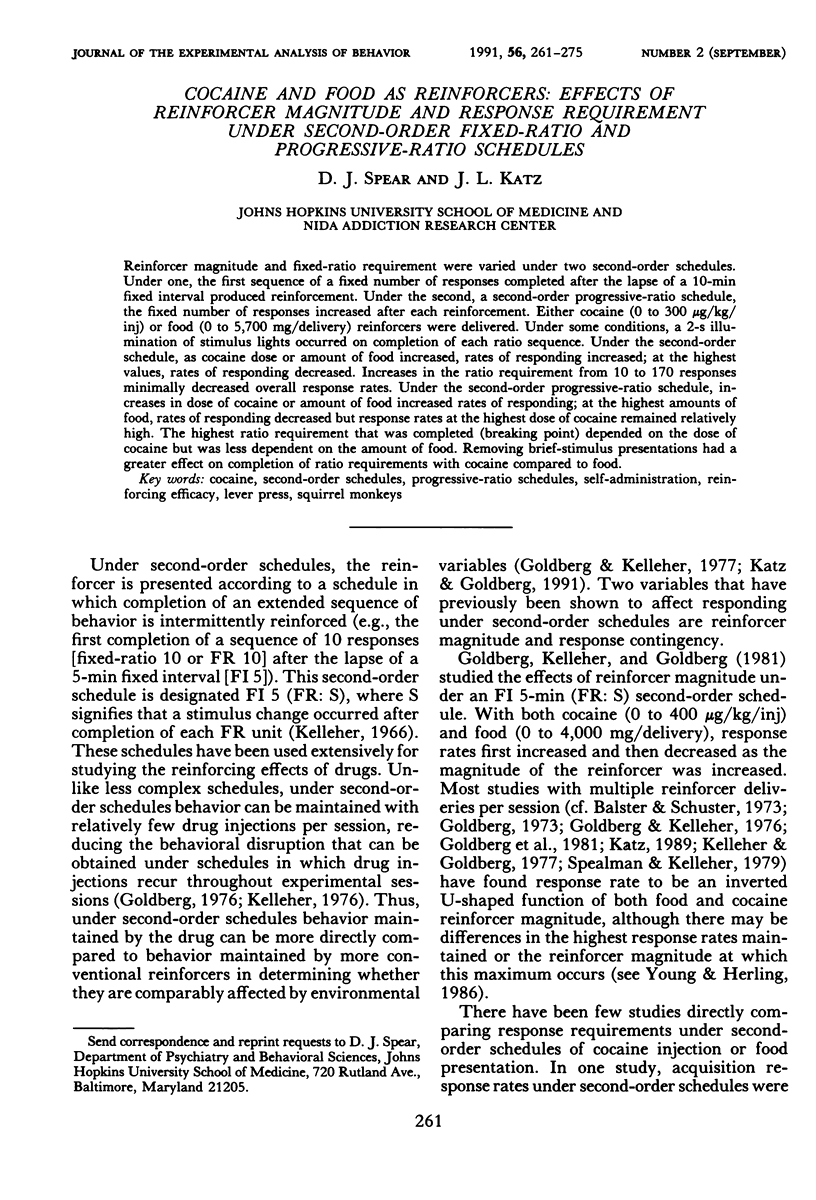
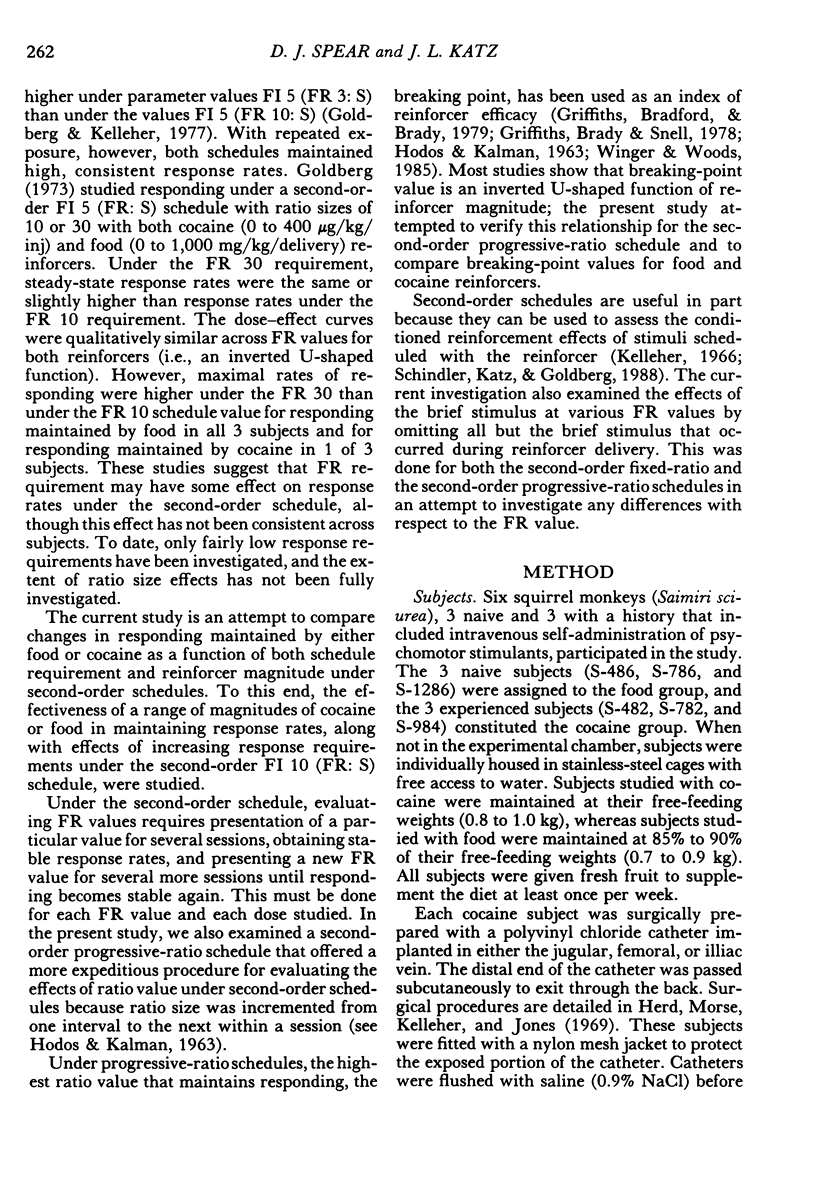
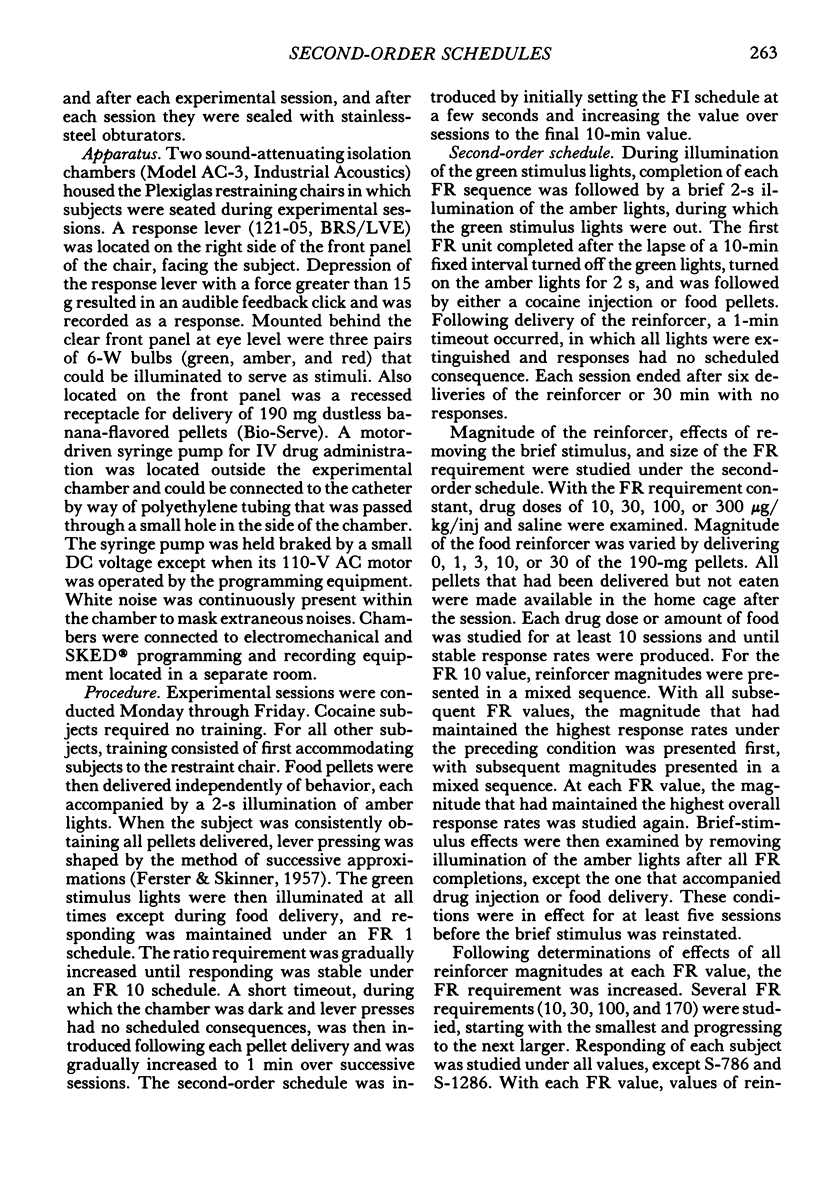
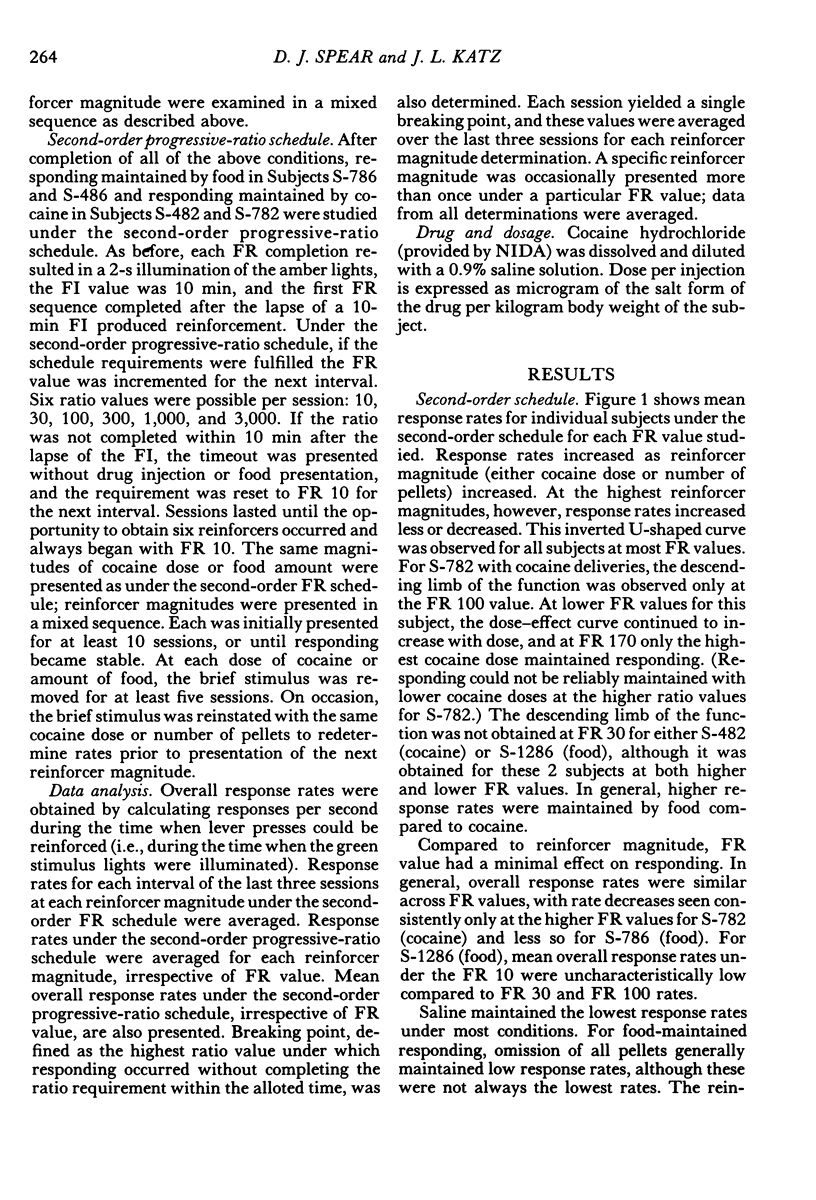
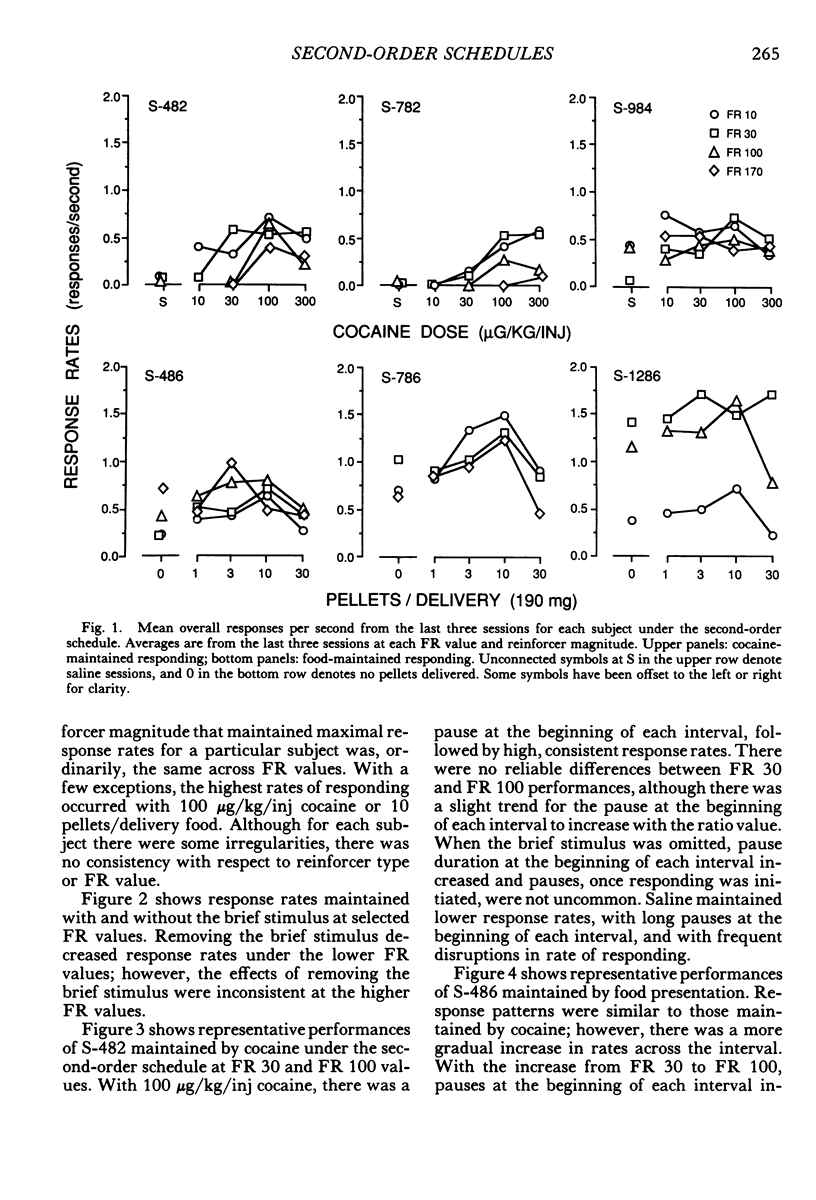

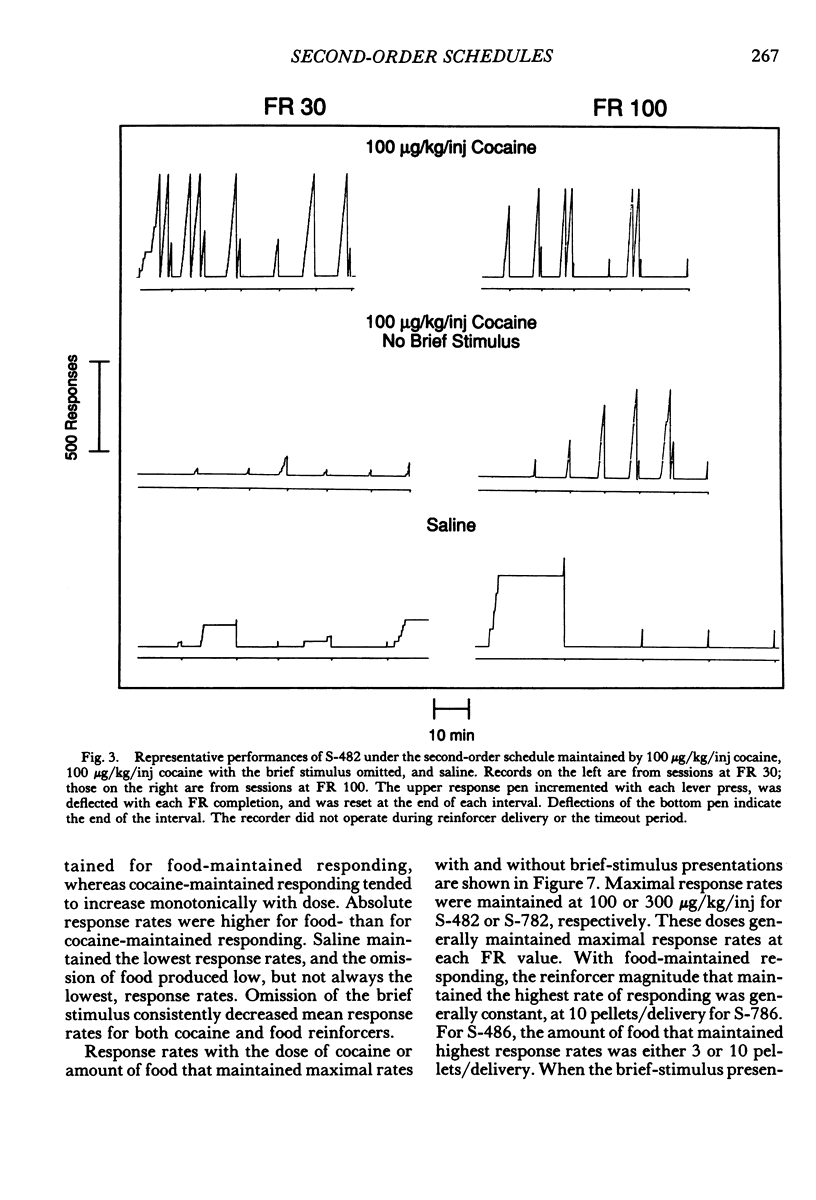
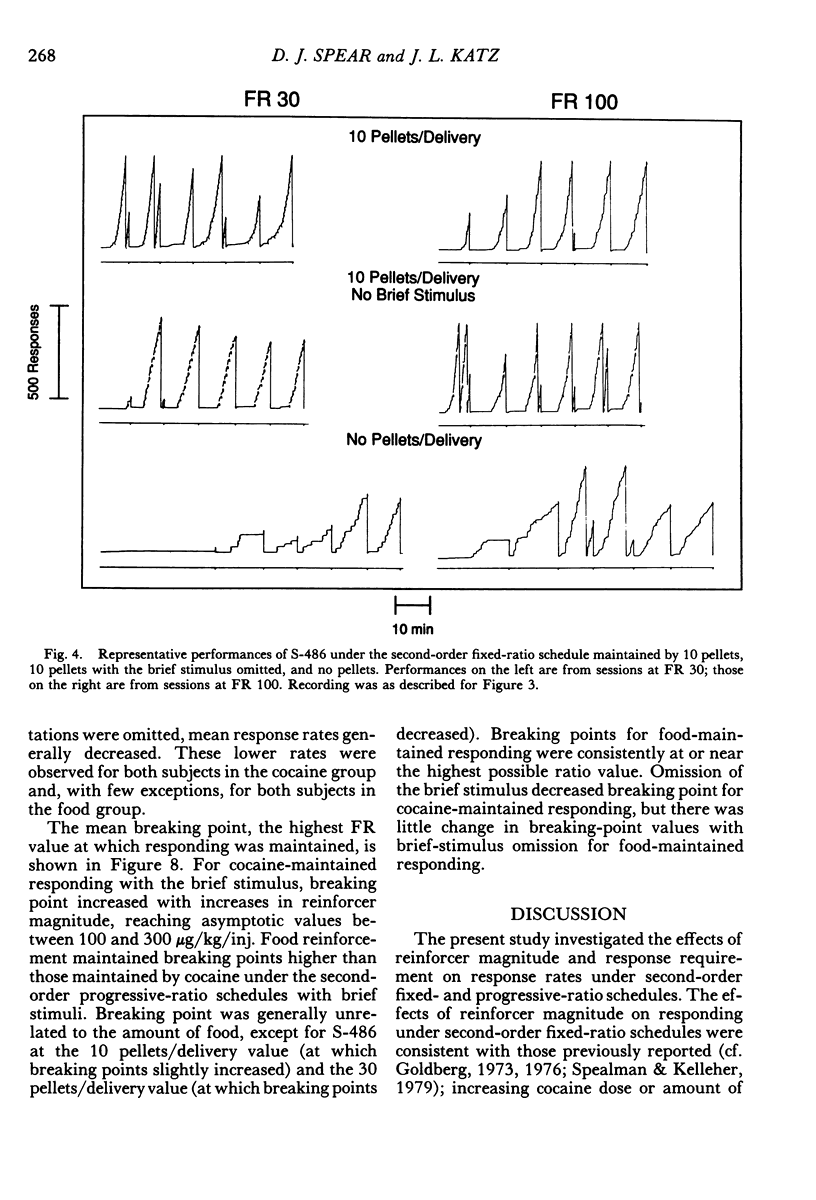
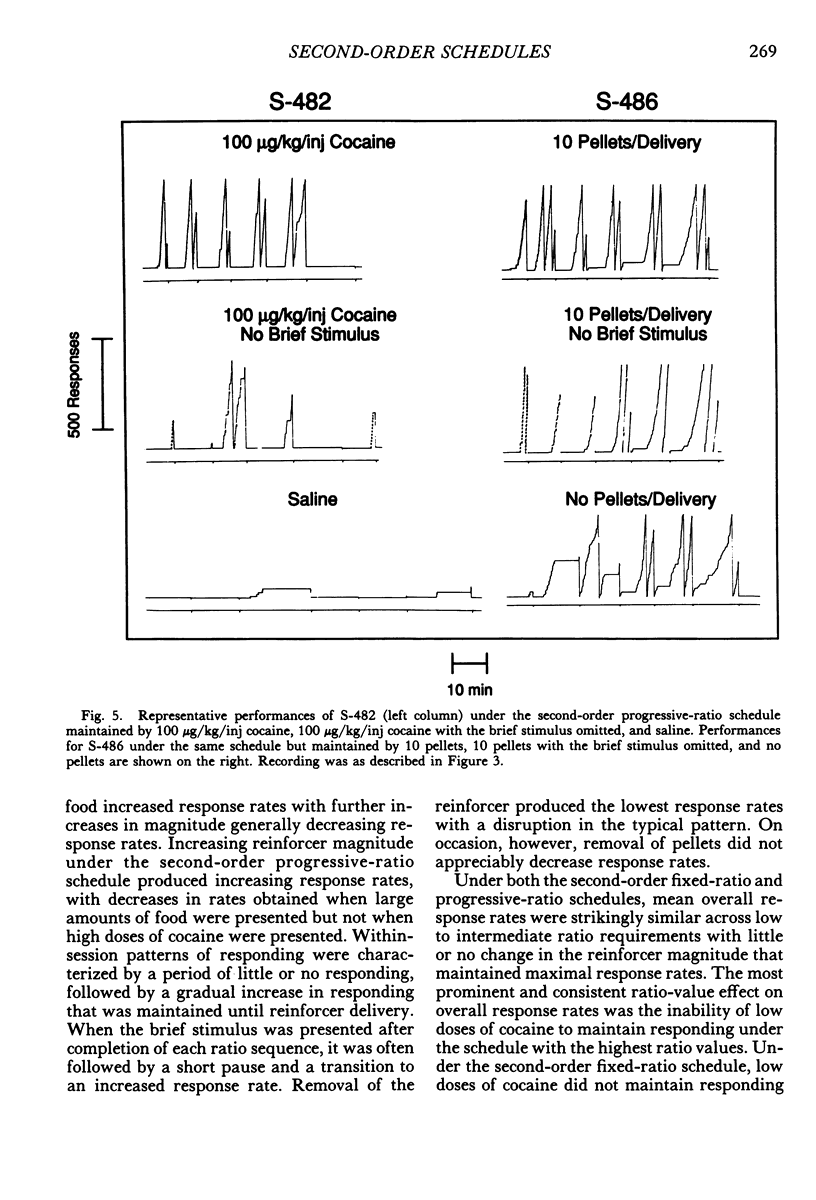
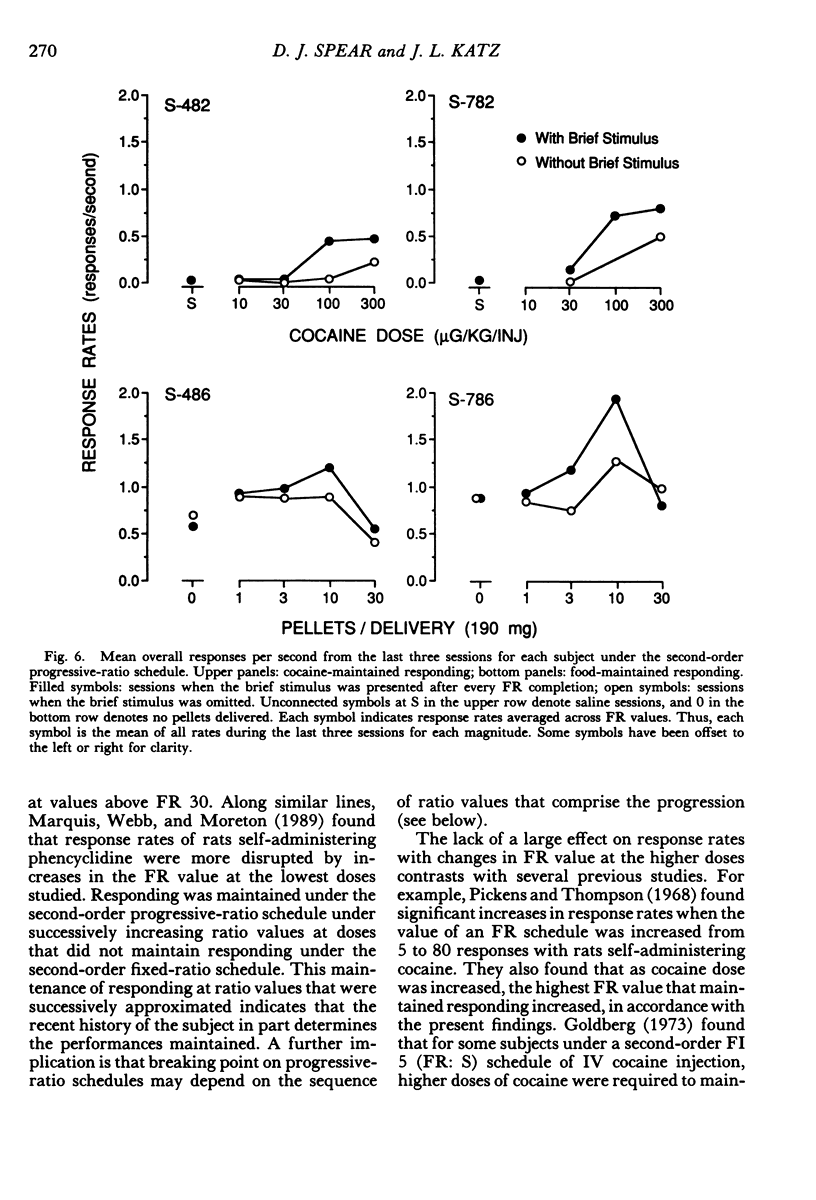


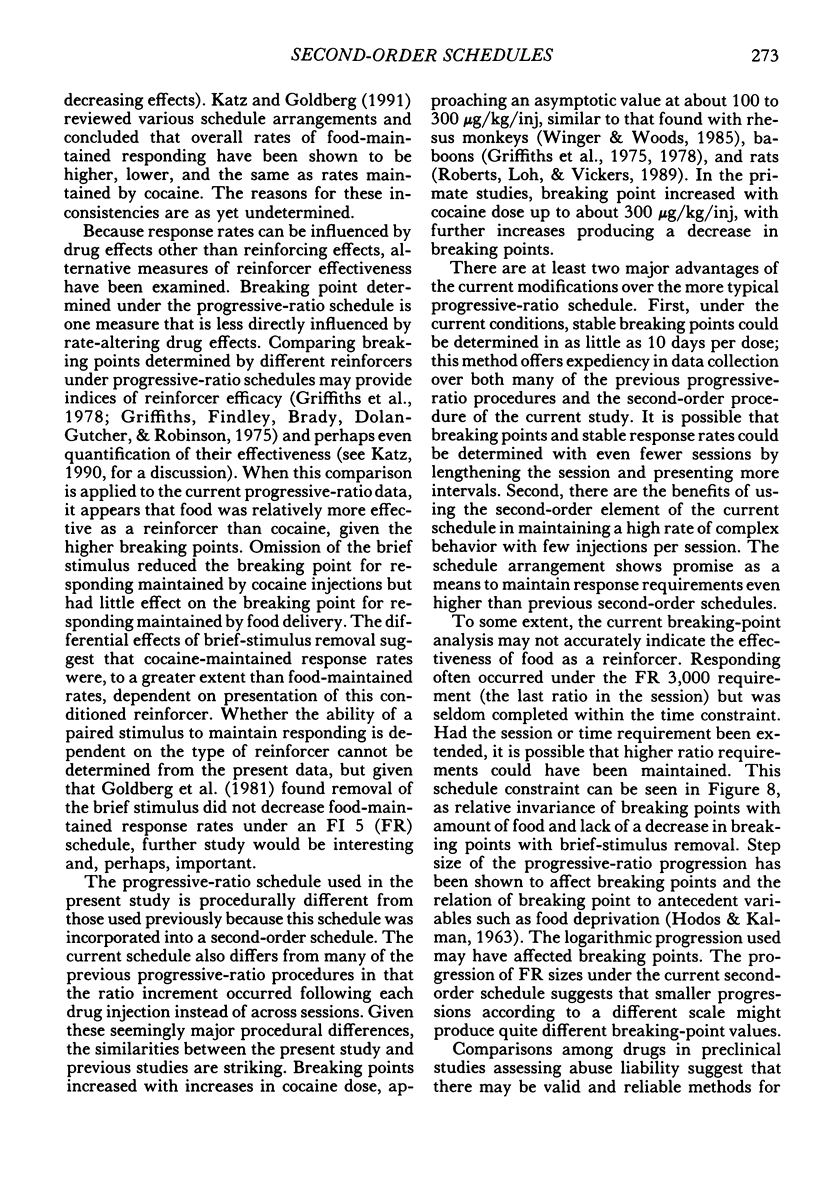


Selected References
These references are in PubMed. This may not be the complete list of references from this article.
- Aigner T. G., Balster R. L. Choice behavior in rhesus monkeys: cocaine versus food. Science. 1978 Aug 11;201(4355):534–535. doi: 10.1126/science.96531. [DOI] [PubMed] [Google Scholar]
- Balster R. L., Schuster C. R. Fixed-interval schedule of cocaine reinforcement: effect of dose and infusion duration. J Exp Anal Behav. 1973 Jul;20(1):119–129. doi: 10.1901/jeab.1973.20-119. [DOI] [PMC free article] [PubMed] [Google Scholar]
- Brito G. N. Operant behavior and drinking suppression in vasopressin-deficient rats (Brattleboro strain). Behav Brain Res. 1985 Jan;15(1):71–74. doi: 10.1016/0166-4328(85)90019-1. [DOI] [PubMed] [Google Scholar]
- Goldberg S. R. Comparable behavior maintained under fixed-ratio and second-order schedules of food presentation, cocaine injection or d-amphetamine injection in the squirrel monkey. J Pharmacol Exp Ther. 1973 Jul;186(1):18–30. [PubMed] [Google Scholar]
- Goldberg S. R., Kelleher R. T., Goldberg D. M. Fixed-ratio responding under second-order schedules of food presentation or cocaine injection. J Pharmacol Exp Ther. 1981 Jul;218(1):271–281. [PubMed] [Google Scholar]
- Goldberg S. T., Kelleher R. T. Behavior controlled by scheduled injections of cocaine in squirrel and rhesus monkeys. J Exp Anal Behav. 1976 Jan;25(1):93–104. doi: 10.1901/jeab.1976.25-93. [DOI] [PMC free article] [PubMed] [Google Scholar]
- Griffiths R. R., Bradford L. D., Brady J. V. Progressive ratio and fixed ratio schedules of cocaine-maintained responding in baboons. Psychopharmacology (Berl) 1979 Oct;65(2):125–136. doi: 10.1007/BF00433038. [DOI] [PubMed] [Google Scholar]
- Griffiths R. R., Brady J. V., Snell J. D. Progressive-ratio performance maintained by drug infusions: comparison of cocaine, diethylpropion, chlorphentermine, and fenfluramine. Psychopharmacology (Berl) 1978 Jan 31;56(1):5–13. doi: 10.1007/BF00571401. [DOI] [PubMed] [Google Scholar]
- Griffiths R. R., Findley J. D., Brady J. V., Dolan-Gutcher K., Robinson W. W. Comparison of progressive-ratio performance maintained by cocaine, methylphenidate and secobarbital. Psychopharmacologia. 1975 Jul 23;43(1):81–83. doi: 10.1007/BF00437619. [DOI] [PubMed] [Google Scholar]
- HODOS W., KALMAN G. Effects of increment size and reinforcer volume on progressive ratio performance. J Exp Anal Behav. 1963 Jul;6:387–392. doi: 10.1901/jeab.1963.6-387. [DOI] [PMC free article] [PubMed] [Google Scholar]
- Herd J. A., Morse W. H., Kelleher R. T., Jones L. G. Arterial hypertension in the squirrel monkey during behavioral experiments. Am J Physiol. 1969 Jul;217(1):24–29. doi: 10.1152/ajplegacy.1969.217.1.24. [DOI] [PubMed] [Google Scholar]
- Katz J. L. Second-order schedules of intramuscular cocaine injection in the squirrel monkey: comparisons with food presentation and effects of d-amphetamine and promazine. J Pharmacol Exp Ther. 1980 Mar;212(3):405–411. [PubMed] [Google Scholar]
- Katz J.L. Models of relative reinforcing efficacy of drugs and their predictive utility. Behav Pharmacol. 1990;1(4):283–301. doi: 10.1097/00008877-199000140-00003. [DOI] [PubMed] [Google Scholar]
- Kelleher R. T. Characteristics of behavior controlled by scheduled injections of drugs. Pharmacol Rev. 1975 Sep;27(3):307–323. [PubMed] [Google Scholar]
- Kelleher R. T., Goldberg S. R. Fixed-interval responding under second-order schedules of food presentation or cocaine injection. J Exp Anal Behav. 1977 Nov;28(3):221–231. doi: 10.1901/jeab.1977.28-221. [DOI] [PMC free article] [PubMed] [Google Scholar]
- Marquis K. L., Webb M. G., Moreton J. E. Effects of fixed ratio size and dose on phencyclidine self-administration by rats. Psychopharmacology (Berl) 1989;97(2):179–182. doi: 10.1007/BF00442246. [DOI] [PubMed] [Google Scholar]
- Pickens R., Thompson T. Cocaine-reinforced behavior in rats: effects of reinforcement magnitude and fixed-ratio size. J Pharmacol Exp Ther. 1968 May;161(1):122–129. [PubMed] [Google Scholar]
- Roberts D. C., Loh E. A., Vickers G. Self-administration of cocaine on a progressive ratio schedule in rats: dose-response relationship and effect of haloperidol pretreatment. Psychopharmacology (Berl) 1989;97(4):535–538. doi: 10.1007/BF00439560. [DOI] [PubMed] [Google Scholar]
- Schindler C. W., Katz J. L., Goldberg S. R. The use of second-order schedules to study the influence of environmental stimuli on drug-seeking behavior. NIDA Res Monogr. 1988;84:180–195. [PubMed] [Google Scholar]
- Spealman R. D., Kelleher R. T. Behavioral effects of self-administered cocaine: responding maintained alternately by cocaine and electric shock in squirrel monkeys. J Pharmacol Exp Ther. 1979 Aug;210(2):206–214. [PubMed] [Google Scholar]
- Winger G., Woods J. H. Comparison of fixed-ratio and progressive-ratio schedules of maintenance of stimulant drug-reinforced responding. Drug Alcohol Depend. 1985 May;15(1-2):123–130. doi: 10.1016/0376-8716(85)90036-5. [DOI] [PubMed] [Google Scholar]


